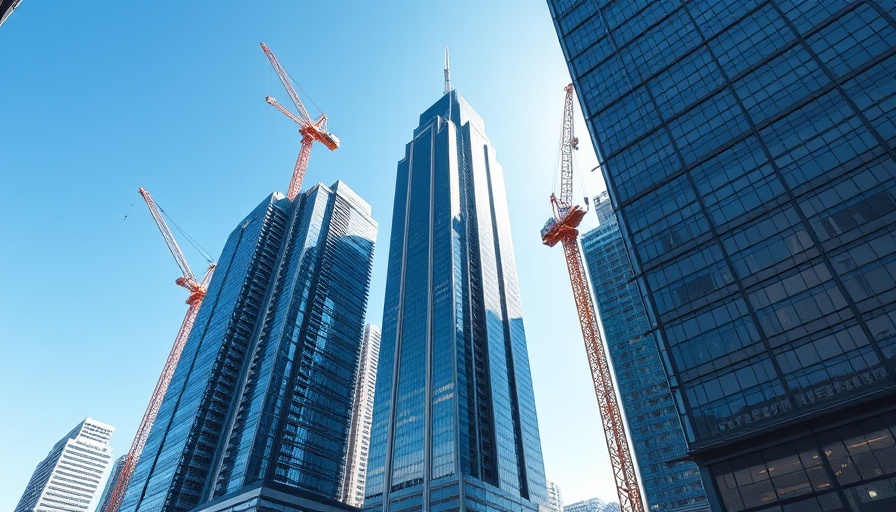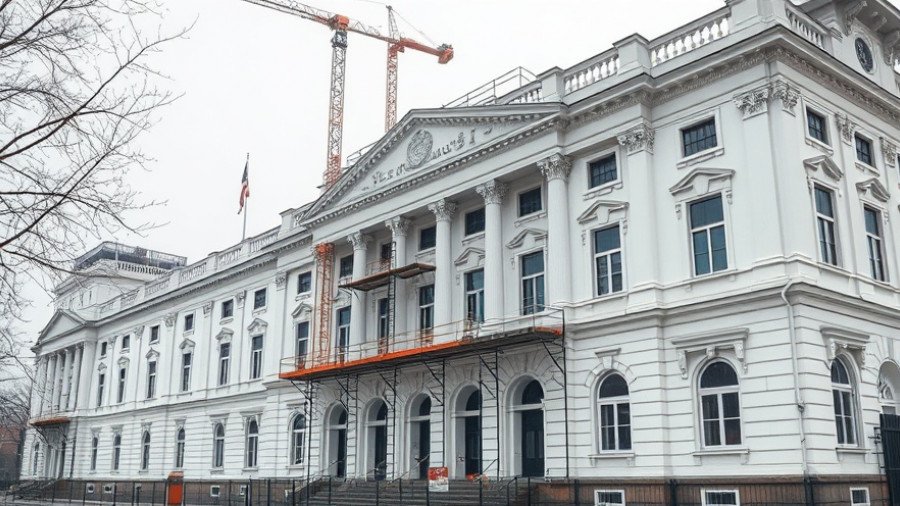
Understanding the Decline: Nonresidential Construction Spending Plummets
In a concerning trend for the construction industry, nonresidential construction spending has seen a downturn for the sixth time in seven months. June's spending report indicated a marginal decrease of 0.1%, bringing the total to an annual rate of $1.241 trillion, according to the latest analysis by the Associated Builders and Contractors (ABC).
Economic Implications for Property Developers
Despite a slight uptick of 0.1% in public nonresidential spending, private sector activity has fallen by 0.3%. This disparity shows a clear hesitance among private developers, likely driven by external economic pressures. Ken Simonson, Chief Economist at AGC, pointed out that project cancellations and delays are stemming from sustained uncertainties regarding tariffs and labor availability. For many property developers, such instability can spell out significant financial implications, often leading them to reevaluate current and future projects.
Why Construction Projects Are Being Pulled Back
The current economic climate poses challenges that extend beyond simple financial metrics. According to ABC's Chief Economist Anirban Basu, weak private activity has constricted overall growth in the sector. Employment growth in construction has also slowed over the past year, as uncertainties loom large. This not only impacts existing projects but also discourages new investments, troubling for business owners in the construction space.
In-Depth Analysis: Tariff and Labor Uncertainty
The amplified concerns over tariffs and labor shortages have led many in the industry to rethink their strategies. Businesses that rely heavily on materials subject to tariffs are especially feeling the pinch. As costs escalate, many are either shrinking their project scopes or delaying start dates altogether. Such measures may seem prudent but could stymie long-term growth by reducing industry competition and innovation.
Future Predictions in Nonresidential Construction
As we look to the future, it remains paramount for stakeholders to be proactive about the evolving landscape. A full year of contraction could reshape nonresidential construction in terms of workforce dynamics, project management, and even technological integration. If employment growth continues to taper, the sector could face deeper issues, such as skill gaps that may hinder recovery efforts. Stakeholders must advocate for policies that address labor shortages and promote stability, ensuring that the construction industry's foundation remains robust.
Exploring the Way Forward
Despite its current struggles, the nonresidential construction sector must adapt to market forces and leverage its strengths. Business leaders should focus on optimizing resource allocation, exploring sustainable building practices, and investing in workforce training. By embracing change and working collaboratively, industry players can pave the way towards recovery and growth, ensuring long-term sustainability.
For business owners, property developers, and facility managers, understanding these trends is critical. To thrive amidst uncertainty, it is vital to stay informed about the challenges and opportunities shaping the construction landscape.
 Add Row
Add Row  Add
Add 




Write A Comment